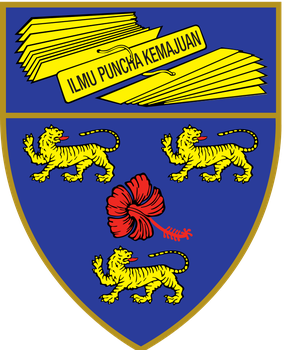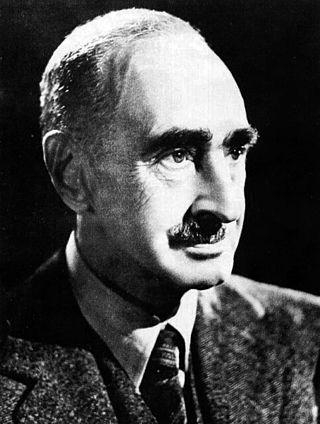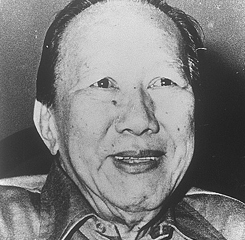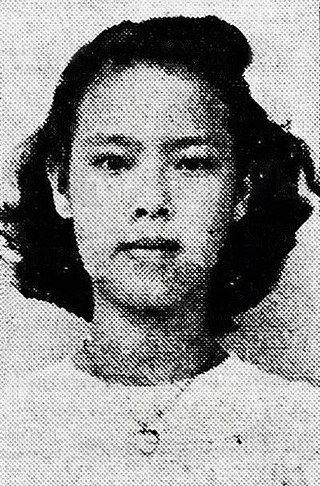
William George Stirling (25 August 1887 - 11 October 1951), was an Assistant Protector of Chinese in Singapore, an artist, a sculptor, and a criminologist.

William George Stirling (25 August 1887 - 11 October 1951), was an Assistant Protector of Chinese in Singapore, an artist, a sculptor, and a criminologist.
Stirling was born on 25 August 1887 in the Sysonby House in Melton Mowbray, Leicester. He later became a boarder at the Warren Hill School in Eastbourne, East Sussex. From 1901 to 1905, he attended Harrow School in London. While he was still attending school, he joined the Japan Society in London, due to his fascination with the Far East. [1]
Stirling arrived in British Malaya in 1907, where he worked in a rubber plantation. He joined the Chinese Protectorate in Malacca in 1915. [1] In October 1918, he was appointed to act as an Assistant Superintendent of Government Monopolies. [2] He served as an Assistant Protector of Chinese in Singapore from 1921 to 1931. He retired in 1932 and returned to England. [1]
Somewhere in 1934, he went to study at the Lyons Criminology Institute under French criminologist Edmond Locard for three years, during which he invented the synchrisiscope. [3]
Stirling was married to Chan Chee Man Wan. Together, they had one daughter, Mary, who was born in 1918. [1] His hobbies included drawing. [4]
In December 1926, he was cut several times with a man by a man while trying to resolve a conflict between the man and his wife. [5] The man had attacked his wife after she stated that she did not want to return to him, after which Stirling interfered and was then attacked by the man. [6] The man later attempted to commit suicide by stabbing himself. [7]
Following his retirement to London, he began to develop his talent for sculpting. [8] In March 1936, two of his bronze sculptures, with one depicting a Chinese boy actor, and the other depicting a Malay boy, were purchased by the Municipal Commission of Singapore using the money Karel Willem Van Kleef had donated. [9] In January 1939, he presented three of the busts he sculpted, a Bust of a Chinese Gentleman, a bust of Arjuna, and a bust of a Chinese girl, to the National Museum of Singapore, then known as Raffles Museum. [10] [11]
Stirling died on 11 October 1951 in St Charles' Hospital in Kensington, London. His funeral was held on 17 October. [1]
In 1956, his wife demonstrated the cooking of Chinese food to Queen Elizabeth The Queen Mother. [12] She died in Hong Kong in 1977. [1]
Stirling Road was named after Stirling in 1956. [1]

Cyril Northcote Parkinson was a British naval historian and author of some 60 books, the most famous of which was his best-seller Parkinson's Law (1957), in which Parkinson advanced the eponymous law stating that "work expands so as to fill the time available for its completion", an insight which led him to be regarded as an important scholar in public administration and management.

The University of Malaya is a public research university located in Kuala Lumpur, Malaysia. It is the oldest and highest ranking Malaysian institution of higher education, and was the only university in newly independent Malaya. The university has graduated five prime ministers of Malaysia, and other political, business, and cultural figures of national prominence.

Tan Chong Tee was a Chinese resistance fighter based in Singapore and Malaya during World War II. An accomplished badminton player before the war, he joined Force 136 around 1942 after Singapore fell to the Japanese. In 1944, while on a mission, Tan, along with Lim Bo Seng and other Force 136 members, was captured by the Japanese. He was subjected to torture during his captivity. After the war, he returned to playing badminton and later became a businessman.

Tun Sir Tan Cheng Lock KBE, SMN, DPMJ, JP was a Malaysian Peranakan businessman and a key public figure who devoted his life to fighting for the rights and the social welfare of the Chinese community in Malaya. Tan was also the founder and the first president of the Malayan Chinese Association (MCA), which advocated his cause for the Malayan Chinese population.

Sir Andrew Caldecott was a British colonial administrator.

The term "British Malaya" loosely describes a set of states on the Malay Peninsula and the island of Singapore that were brought under British hegemony or control between the late 18th and the mid-20th century. Unlike the term "British India", which excludes the Indian princely states, British Malaya is often used to refer to the Federated and the Unfederated Malay States, which were British protectorates with their own local rulers, as well as the Straits Settlements, which were under the sovereignty and direct rule of the British Crown, after a period of control by the East India Company.
The Ho Hong Bank (1917–1932) was a Malayan bank, established to provide banking services that, until 1912, were solely delivered by European banks. The bank was founded in 1917 and in 1932 merged with two other banks in Singapore to form the Oversea-Chinese Banking Corporation.

Seow Poh Leng one of the first few Peranakan Babas at Emerald Hill, was a prominent and successful Singaporean banker, founding member of the Ho Hong Bank, member of the committee of the Straits Settlement, philanthropist and benefactor of public development works. He was a strong advocate of limited liability trading and promoted the advantages of the Limited Liability Company system.
Sir Richard Olaf Winstedt, or more commonly R. O. Winstedt, was an English Orientalist and colonial administrator with expertise in British Malaya.
Eu Chooi Yip was a prominent member of the anti-colonial and Communist movements in Malaya and Singapore in the 1950s and 1960s. Eu Chooi Yip was born in Kuantan, Malaysia.

Joseph Choo Seng Quee, popularly known as Uncle Choo, was a Singaporean footballer and football coach. He was coach of the Indonesia, Malaya/Malaysia and Singapore national teams. He is widely recognised as one of Singapore's best football coaches.
Wilfred Lawson Blythe was a British colonial administrator who served as the second Colonial Secretary of Singapore from 30 June 1950 to 30 July 1953.

Brigadier Sir Patrick Alexander Bruce McKerron, known as Patrick McKerron was a British Army officer and colonial administrator. He joined the Malayan Civil Service in 1920 as Assistant Superintendent before retiring as Colonial Secretary of Singapore in 1950.
Sir Alexander Sym Small was a colonial administrator. He joined the Malayan Civil Service and was a cadet in January 1911 and served most of his Civil Service career in Federated Malay States (FMS) and Straits Settlements (SS). He retired as the Colonial Secretary of Straits Settlements in 1940.

Sir George Vance Allen was an Anglo-Irish British medical doctor, bacteriologist and academic administrator who served as the first Vice-Chancellor of the University of Malaya.

The Bust of a Chinese Gentleman is a bust of a Chinese man donated to the National Museum of Singapore by William George Stirling in 1939.

Helen Heng Siak Neo was a Singaporean badminton player who won numerous titles in the late 1940s to the mid 1950s. She was Singapore's badminton star of the 1950s and was the youngest winner of the Malaysia Open women's singles and doubles titles when she won it at the age of 15. Helen was also the most successful female shuttler in Singapore Open history with 15 titles and the first female player from Singapore to participate in the Uber Cup as part of the Malayan team in 1956.
Ishak bin Ahmad was a prominent civil servant and the father of Yusof Ishak, the first president of Singapore.